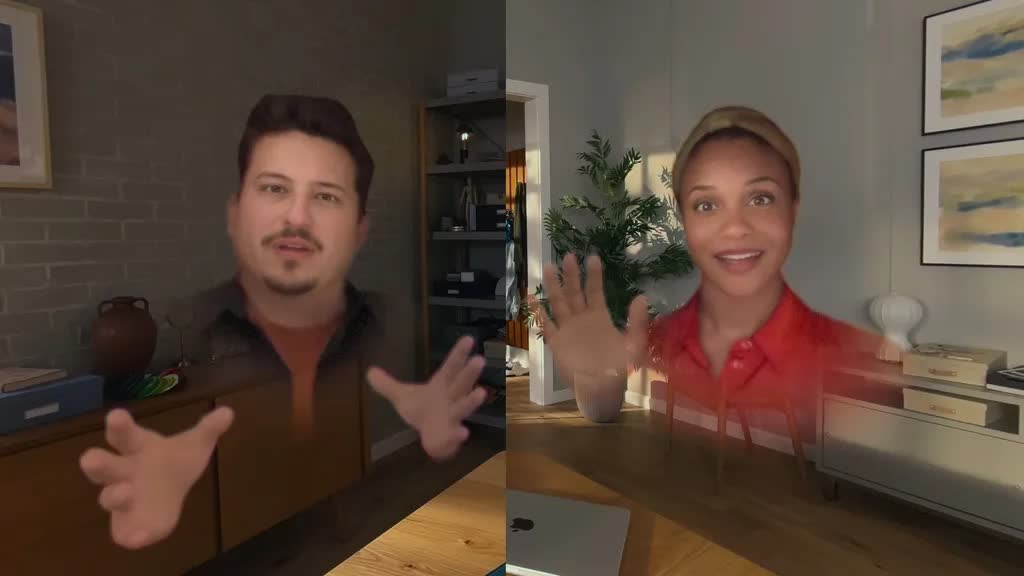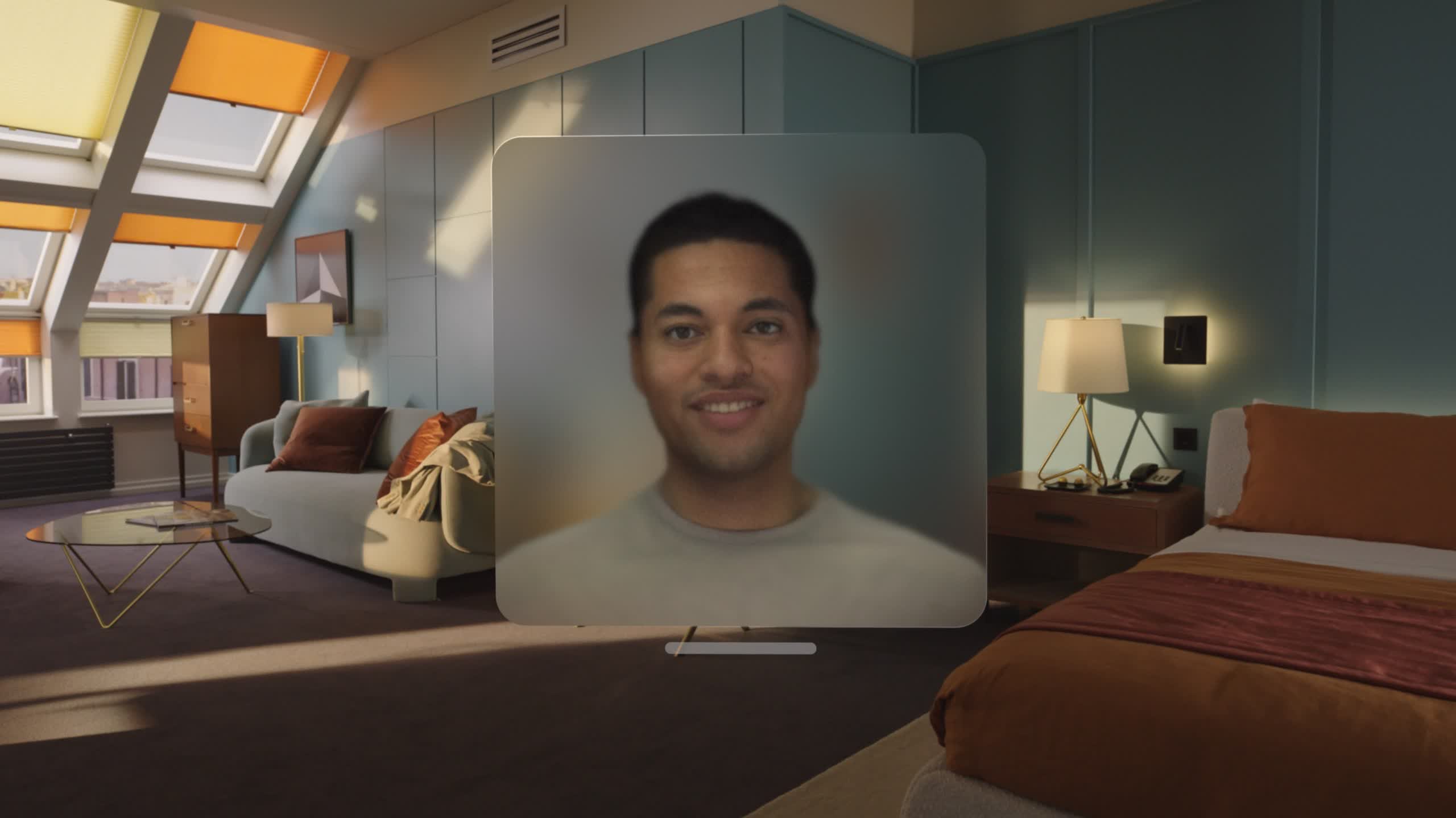Why it matters: Apple just released a new Vision Pro feature called "Spatial Personas." Personas are visual representations of users (avatars) and have been available since the headset launched on February 2. So technically, the feature is just an upgrade to the existing tech, but a significant one.
Personas are avatars that look like their users. In that sense, they are similar to Memojis on iPhone. The primary difference is that Personas look way more lifelike. Users set up the realistic avatar by allowing the Vision Pro to perform a 3D face scan, which it uses to create a digital likeness. The avatar appears in a movable 2D tile during FaceTime calls or other multiuser activities, like SharePlay. The Vision Pro uses AI to sync the avatar to match the user's head, mouth, and hand movements. The effect is like having a floating animated portrait in your session space.
However, this new feature eliminates the "picture frame" aspect. Since the Persona only has a head, shoulders, and hands, it looks more like a floating ghost rather than an actual person. Despite the apparition-like appearance, it does create a more personal sensation of the other user being in the room. Part of this is due to real-time movement tracking. If users move closer or farther away or even change positions in the room, this is tracked and translated to the virtual space as if they are there. If you don't like that your colleague moved in front of the diagram he is explaining, simply pinch his avatar ("I'm crushing you" style) and move it where you want it.

Spatial Personas above vs Standard Persona below

Another convenient feature is that supported apps are more interactive. A whiteboard app called Freeform has FaceTime support, so if a user opens it, the app opens and syncs with the other people on the call. Using it with standard Personas is limited since they are stuck in their tile. With Spatial Personas users can gesture and point to areas on the board or even interact with it, increasing the illusion of "being there."
Apple TV is another app that is Persona-friendly. In this use case, instead of appearing in front of each other, Personas are situated adjacently as if sitting beside each other. The screen floats unobstructed in front of both users, but if they look to their left or right, they can see each other as if they were in the same room.
The primary drawback of Apple's avatars is that they straddle the uncanny valley. Each Persona accurately reflects the user and looks real, but they still have an unnatural quality. Many users find this off-putting and would rather see a cartoonish Memoji representation. Spatial Personas might even amplify the uncanny valley effect. Fortunately, the 2D tiles are the default so that users can leave the feature off if they choose.
The feature is currently in public beta and works with up to five users on a call. To activate, start a FaceTime call, then tap the Spatial Persona option. It works for the latest version of visionOS (1.1.1). If your Vision Pro is up-to-date, but you don't see the option for Spatial Personas, try rebooting.
Apple's Spatial Personas for the Vision Pro bring your FaceTime callers into the room